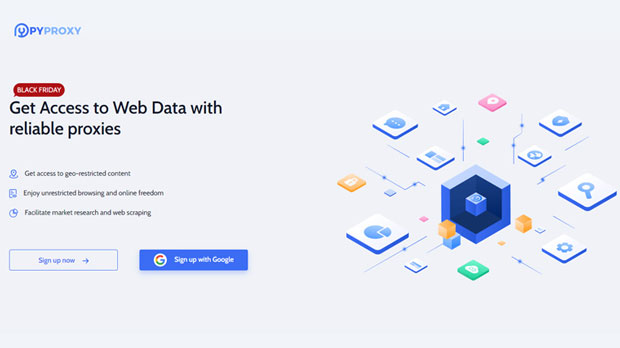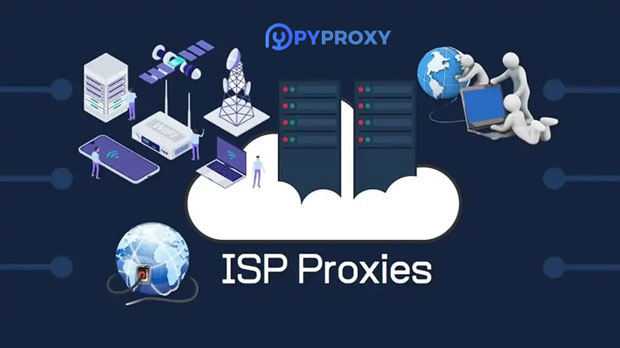When evaluating residential proxies for HTTPS usage, two major contenders stand out: PYPROXY and Iproyal residential proxy. Both of these services offer robust proxy solutions for a range of applications, from web scraping to online anonymity. In this article, we will dive into a detailed comparison between Pyproxy and Iproyal, focusing on their respective HTTPS residential proxy features, performance, and overall user experience. The aim is to help users understand which service might be better suited for their specific needs, providing valuable insights into speed, reliability, pricing, and other key factors. Understanding Residential ProxiesBefore we dive into the comparison, it's essential to understand what residential proxies are and why they are particularly valuable for HTTPS-based tasks. A residential proxy routes your internet traffic through a real user device, typically a computer or mobile phone, which makes the IP address appear as if it's coming from an actual residential user rather than a data center. This provides a more natural and less detectable browsing experience, making it ideal for use cases that require anonymity, such as web scraping, ad verification, and online research.Pyproxy vs Iproyal: Key DifferencesWhile both Pyproxy and Iproyal Residential Proxy offer high-quality residential proxies, there are key differences in their offerings that can significantly affect your decision depending on the intended use. The main factors to consider are speed, reliability, geographic coverage, and ease of integration.1. Speed and LatencySpeed is a critical factor when selecting a residential proxy service, especially for tasks that involve real-time data collection, such as price scraping or competitive analysis. Both Pyproxy and Iproyal offer high-speed proxies, but the actual speed will depend on the location of the proxy server and the type of residential IPs they use.Pyproxy tends to provide more consistent performance, with minimal latency during peak traffic hours. Its vast proxy pool offers flexibility in choosing the ideal location for your task. On the other hand, Iproyal’s speed performance is highly reliable, especially for users who need proxies in specific geographic regions. However, Iproyal might occasionally experience slower speeds in regions with fewer available residential IPs.2. Proxy Pool Size and Geographic CoverageThe size of the proxy pool and the geographic spread of the proxies are two major considerations when choosing between Pyproxy and Iproyal.Pyproxy offers an extensive pool of residential IPs across many countries, including both major and niche regions. This diversity ensures that users can obtain proxies from virtually any location in the world, providing greater flexibility for tasks like geolocation-based data scraping.Iproyal, while slightly smaller in terms of overall proxy pool size, provides a more targeted approach, specializing in regions with high demand such as North America and Europe. For users targeting specific countries, Iproyal may offer a more reliable and tailored experience, although the smaller pool size could limit broader usage.3. Reliability and UptimeReliability is one of the most critical factors for any proxy service. A slow or unreliable proxy can severely hinder productivity, especially for businesses that rely on constant data updates. Both Pyproxy and Iproyal offer high uptime guarantees, but there are subtle differences in their performance under load.Pyproxy tends to perform consistently well, even during heavy traffic periods. Its infrastructure is designed to handle large-scale proxy requests without noticeable downtime. Users who require continuous access to proxies will likely benefit from Pyproxy's robust reliability.Iproyal also boasts a high uptime rate, but during times of heavy usage, it may experience minor delays or occasional connection issues. While these disruptions are typically short-lived, they can be noticeable for users with high-volume needs.4. Integration and Ease of UseBoth Pyproxy and Iproyal provide user-friendly interfaces and API integrations for easy integration into your existing systems. The process of setting up and using proxies is relatively straightforward for both services, but there are subtle differences that could impact the user experience.Pyproxy offers comprehensive documentation and an intuitive dashboard, making it easy for both beginners and experienced users to manage their proxies. The service also provides custom configurations, giving users the ability to tailor their experience based on specific needs.Iproyal offers a similarly user-friendly interface, but its focus on simplicity may limit customization options for advanced users. For those who need quick setup without much configuration, Iproyal’s streamlined service will be ideal. However, users seeking more granular control may find Pyproxy’s offerings more adaptable.5. Pricing and ValuePricing is always a key factor when choosing a proxy provider. While both Pyproxy and Iproyal offer competitive pricing, there are some differences in terms of flexibility and cost-effectiveness.Pyproxy’s pricing model is based on usage, allowing customers to pay for exactly what they need. This can be beneficial for users who only need proxies occasionally or at a smaller scale. However, Pyproxy’s flexibility may come at a slightly higher cost per proxy.Iproyal offers more competitive pricing, particularly for bulk purchases. For large-scale users who need proxies in large quantities, Iproyal may provide better overall value. Additionally, Iproyal’s tailored pricing for specific regions ensures that users can get the most affordable solution for their needs.6. Customer SupportCustomer support is another crucial aspect of any proxy service, especially when technical issues arise. Both Pyproxy and Iproyal offer solid customer support, but there are some differences in their approach.Pyproxy provides 24/7 customer support through multiple channels, including live chat and email. Its support team is responsive and knowledgeable, with a strong focus on resolving issues quickly and efficiently.Iproyal also offers reliable customer support, with a similar range of contact options. However, while the service is generally responsive, there may be slightly longer wait times during peak hours.Conclusion: Which Service is Better for HTTPS Residential Proxies?When it comes to selecting between Pyproxy and Iproyal Residential Proxy, the decision ultimately depends on your specific needs and use case. Pyproxy stands out for its consistent speed, broad geographic coverage, and reliable uptime, making it an excellent choice for users who require high performance across diverse regions. Its flexibility and ease of integration make it ideal for both small-scale and large-scale projects.Iproyal, while offering a smaller pool of proxies, excels in pricing for bulk users and provides tailored services for specific regions. It’s best suited for those who need proxies in high-demand areas like North America and Europe and who prioritize affordability over the absolute scale of proxy availability.Both services provide solid solutions, but your choice should depend on factors such as geographic requirements, budget constraints, and the scale of usage. Regardless of the choice, both Pyproxy and Iproyal provide excellent HTTPS residential proxy services that can meet a wide range of business and personal needs.
Sep 24, 2025



































































